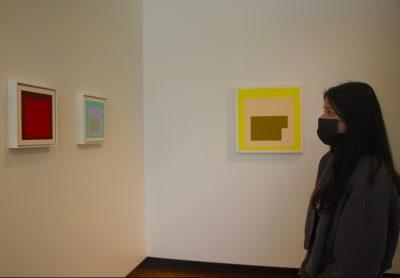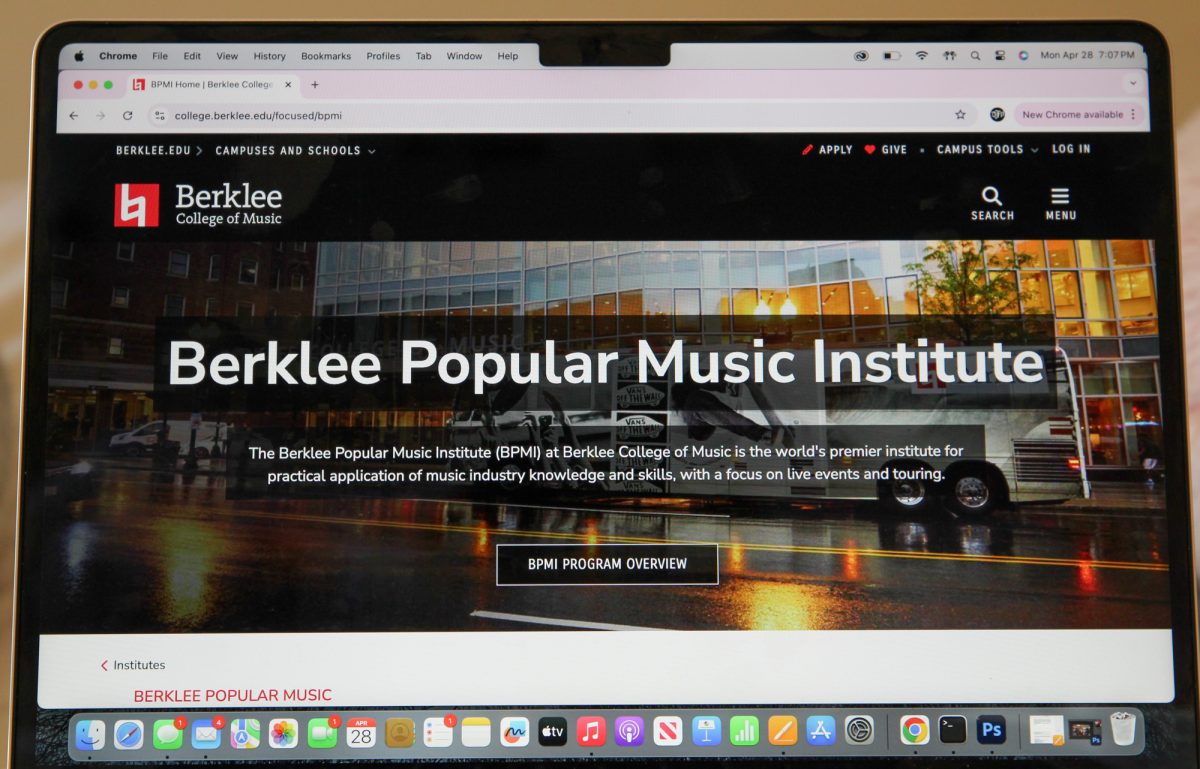An array of muted color prints contrasted by sharp vibrant pieces fill the Faye G., Jo, and James Stone Gallery in Boston University’s College of Fine Arts. The current exhibitions — Josef Albers’s “Formulations: Articulation” and Steve Locke’s “Homage to the Auction Block” — work together to tell a story of color theory, perception and artistic understanding.

Both exhibitions opened in the Stone Gallery on Oct. 1, but “Formulations: Articulation” will stay until Dec. 12. Locke’s accompanying exhibition will leave on Oct. 27.
Albers’s work showcased at the Stone Gallery are silkscreen prints published in 1972 that fully document his work as an educator and artist, as well as his contribution to Modernism. The pieces range from his work in color theory and color perception to his pieces focusing on shape and illusion.
Albers was a well-known American-German color theory artist and educator most known for his time teaching at Yale University. He continued living in New Haven, Connecticut until his death at the age of 88 in 1976. “Formulations: Articulations” was his last series.
Locke’s exhibit, created in 2019, is influenced by Albers’s work, with an “auction block motif” enclosed in Albers’s modernist-style squares on print, Locke’s website states. Locke, a Questrom School of Business 1984 graduate and Massachusetts College of Art and Design graduate, describes the work on his website as a space to show “how modernist idioms can and do contain a racial history.”
“The first part is the relationship to Josef Albers and [Albers’s] Homage to the Square, which is a hugely important milestone in modernist art,” Locke said in an interview. “Albers is probably, as an artist and as an educator, one of the most influential people of my practice. I look to him all the time.”
Locke said the auction block motif was also inspired directly from his proposal when he was an artist-in-residence with the City of Boston to create a memorial at Faneuil Hall dedicated to the enslaved Africans sold at that site. The memorial was “never realized,” Locke said, but the project led him to explore connections to modernism.
Locke added that modernism “goes beyond art,” and that modernity at large in the West is inextricably tied with enslavement.
“If not for the kidnapping and enslavement of millions of people, you don’t have America, you don’t have the Industrial Revolution, you don’t have the cotton gin … you don’t have the growth of the United States without slavery,” Locke said.
Art History master’s degree students and gallery assistants Ateret Sultan-Reisler and Yutong Shi studied Albers’s work and give tours of the exhibit. They explained the process that went into silk printing Albers’s work as his color theory practices.
“He’s making this argument about how color is not in a vacuum, it’s impacted by the things around it as well,” Sultan-Reisler said.
Shi said that at its first glance, it seems the prints are replicas of the original pieces, but the work is more about the printing process.
“It’s more about different combinations, different sides of squares with different variations,” Shi said. “It really looks very different even though it is the same color and same square. It’s really about what kind of effect is produced through these different combinations.”
Sultan-Reisler and Shi spoke also about the curatorial process and the inclusion of Locke’s work in the gallery. Shi said that the choice to include Locke’s exhibition in its own alcove of the gallery was a curatorial choice by the BU Art Galleries Managing Director.
Locke’s pieces are meant to be a contemporary juxtaposition to Albers’s work. The graduate assistants said the gallery plans to continue to use the alcove for future contemporary exhibitions that will work to further illuminate Albers’s exhibition during its time at the gallery.
As for his work’s more vibrant color palette, Locke spoke about the limitations in colors Albers faced during his time. He went on to explain that our wide range of colors now, including in acrylic paint, is something that Locke says Albers would have found fascinating.
“If Albers were still with us, he would be exploring all those colors and all those different materials,” Locke said. “I’m just trying to think about my own concerns about color. Some of it is relative, some of it is emotional.”


























































































































